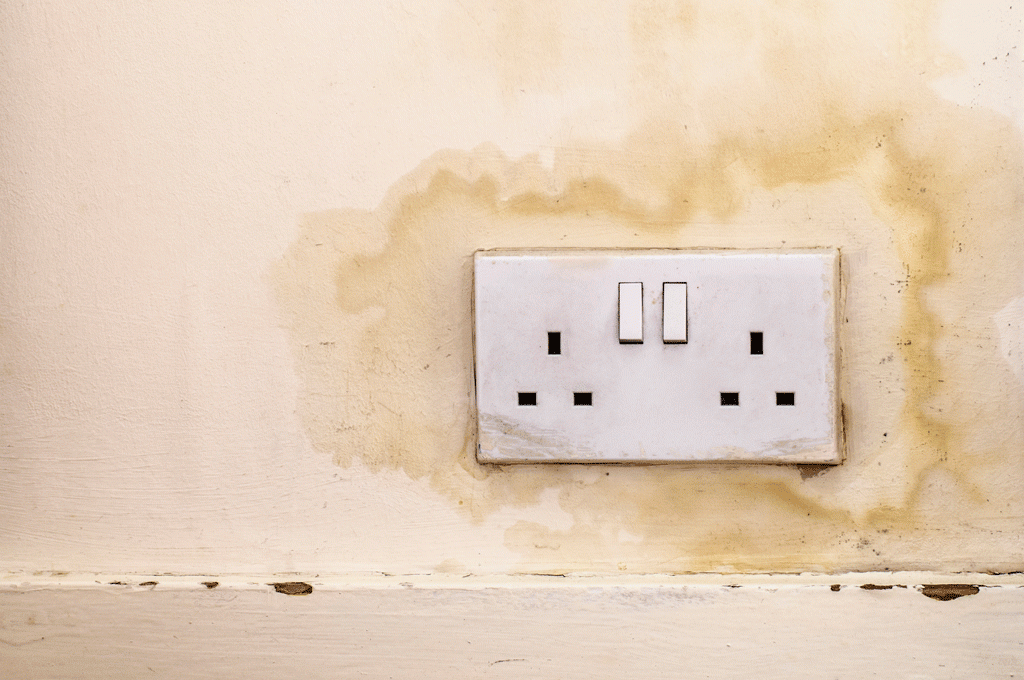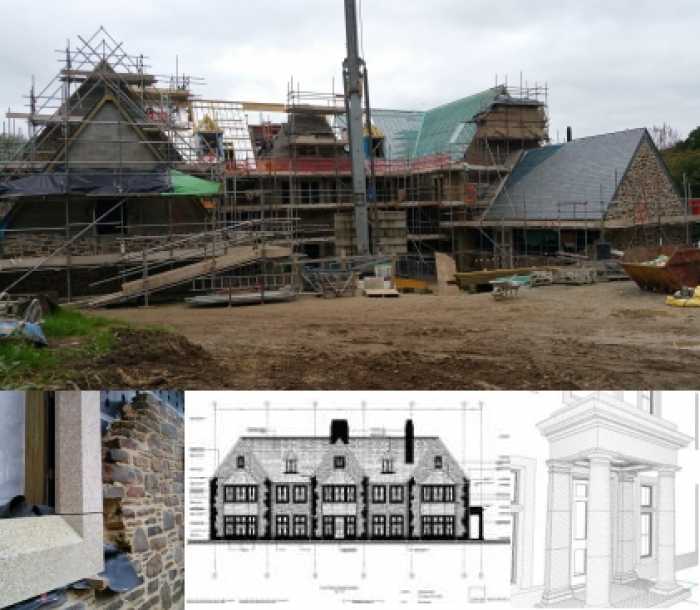Damp treatments available from
Rochester Building and Damp
Whether you need us to waterproof your basement or provide a treatment for rising damp, Rochester Building and Damp in Medway, Kent is just a call away.

What is Rising Damp?
Rising Damp is simply dampness from the ground that enters a structure by capillary action. Rising damp can occur on any wall which is built into the ground.
Rising damp can be a common problem in older properties, often causing decay to skirting boards, damage to plaster and to decoration. Rising damp is caused by the lack of, or breakdown of, the original damp course in the property. Our surveyors can assess the cause of your damp and make recommendations for treatment.
Only rising damp can be cured by the installation of a chemical damp proof course (DPC).

Signs to help identify Rising Damp
Decayed skirting boards, crumbling or salt stained plaster, discolouration and staining, decayed timber floors, peeling paint and wallpaper are all common when walls are affected by rising damp. These defects are not always evident but when they are, a specialist inspection is always recommended.
Following a damp survey, Rochester Building and Damp can provide advice and solutions tailored to your needs. For example, when damp rises in a building, the plaster is often contaminated with salts. These salts are hygroscopic, meaning they absorb moisture from the air, further adding to the problem. This contamination will often result in a need for the plaster to be removed and replaced using specially formulated salt resistant plaster additive. If specialist re-plastering is required, our surveyors can advise which areas need attention.
Where there is a difference in floor heights or ground levels, appropriate recommendations will be provided which may include the provision of a vertical waterproof barrier.
Members of the PCA have the skills and experience needed to diagnose, report on and repair buildings affected by rising damp
Our experienced Surveyors, will carry out a survey on your property to diagnose the correct cause of dampness in your property. It is extremely important this is done, as a damp proof course will not cure other damp problems, such as condensation or lateral penetration.
For your peace of mind, our damp proofing installation and diagnosis comply with British Standard BS6576.

What is involved in Rising Damp treatment?
Most types of masonry used in the walls of buildings will allow some water movement by capillary action. However, this is usually controlled by a physical barrier or damp proof course. If this physical barrier is absent, has broken down or is damaged then it is often possible to install a remedial damp proof course (DPC) to control water rising from the ground.
Dampness rising from the ground often introduces contaminating salts into the walls and plaster coats. These salts are hygroscopic, meaning they absorb moisture from the air, further adding to the problem. This contamination will often result in a need for the plaster to be removed and replaced using specially formulated salt resistant plasters. Members of the PCA have the skills and experience needed to diagnose report on and repair buildings affected by rising damp.
How Can I Be Sure I Have Rising Damp?
Rising damp differentiates from other damp related issues due to a number of key characteristics. Look for the following signs to confirm your problem is rising damp:
- Tide mark staining, usually yellow or brown hints coming up from the skirting boards.
- White salty deposits will be left on your wall’s plasterwork
- Black spots of mould may be beginning to form in some areas
- Boards and flooring may start to show signs of rot
If you’re having damp problems that don’t match up to these traits it is likely coming from the roof/loft. If damp patches appear over 1.2m up and are not evenly spaced, you will need to investigate elsewhere.
What Are The Causes Of Rising Damp?
It’s imperative you locate the root cause and handle it effectively, otherwise it will have been a waste of time when dampness returns in the future. Work your way through this list to identify your cause of rising damp:
- Locate your wall’s damp proof course (DPC). You should be able locate this layer in the wall from the outside of your property. It should run along your walls horizontally, approximately 6” from ground level. It forms a vital physical barrier and prevents water from rising through your wall. Your house may not have one, if so this is the primary cause.
- Check for bridging. Anything that comes into contact with the wall at a higher level than the DPC can form a bridge. This allows water to bypass the DPC and eventually infiltrate the house. Check ground level is not above the DPC and consider external structures such as stairs.
- Check Your Neighbour’s home. If your house is attached in any way they may have caused bridging that’s affecting your home. Check their DPC is present, above ground level and not higher than yours or bypassed by external structures.
- Consider Internal Bridging. It’s possible for bridges to occur within a wall cavity. It is often caused by trapped debris from the initial construction. If significant enough to allow moisture to wick through and bypass the DPC you have a problem.
How to Fix Rising Damp
Many of the solutions to rising damp are highly suitable for DIY projects if you want to save money. However, Rochester Building and Damp provide a fast, efficient and affordable service with a 20 year transferable guarantee certificate on every job.
- If you do not have a DPC you will need to retrofit one. Fortunately, there are a number of options available that will be discussed further on.
- If your ground level is above the DPC you will need to dig it out. Remember, a functional DPC must be 6” above the ground level. Otherwise, you can dig a trench around the external walls to reduce the ground level. Ensure water isn’t going to gather and rise above the DPC.
- If you have an external bridge you will need to adjust it. Consider removing or simply adjusting any structures that may be causing a bridging effect. If you can’t remove it you can install another DPC at a higher level.
- If you suspect bridging within your cavity wall you will need to inspect it. You can carefully check within your wall by removing 1-2 external bricks. Do not remove more without first consulting a building surveyor. If it’s full of debris you can try removing it by hand and with a vacuum cleaner. Do not proceed with this yourself if you do not feel confident.
More Information On Damp Proof Courses
Over the years construction practices have changed, as has the DPCs used in our homes. Initially, many homes used slate tiles, yet with modern plastic damp course the cost is far lower, it has become the new standard. Stainless steel is also used in many modern construction projects.
These DPCs are great for initial construction, yet as homeowners we have to consider what’s available for retrofit. Below are the most common options you will come across when searching for home DPC installations.
– Water Repelling Chemicals: Different forms of cream gel or pastes that are injected into the wall by hand.
– Pore blocking salt mixtures: A cement-based mortar that can be fed into walls using a machine pump.
– Osmotic water repellent: Wires are imbedded directly into the wall then actively or passively repel water infiltration.
For further information or questions/queries relating to the damp in your property, please contact us today.




